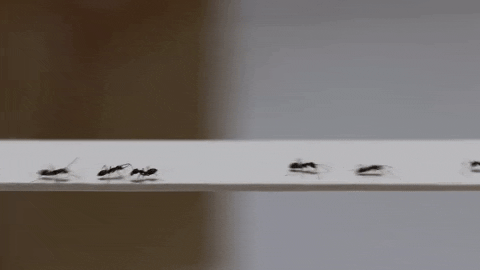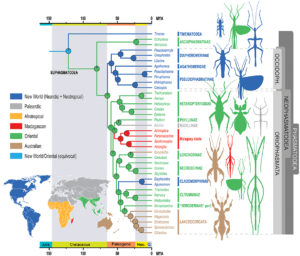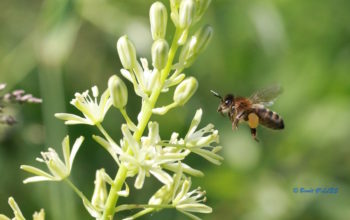The fruit fly, Drosophila melanogaster, although studied for nearly 100 years by scientists from around the world and all disciplines, the parameters allowing the choice of sexual partner by the female are still little known. An international team of researchers has just highlighted the role of the light refraction of the male’s wings in the attractiveness of the female and in the choice of sexual partner.
In nature, vision is involved in a multitude of biological processes such as reproductive strategy, reporting or social behaviours. Natural selection has allowed an infinite diversity of colour and pattern to appear in animals, such as birds and butterflies. Colour can thus play a role in camouflage, defence against predation and rapprochement between sexual partners.
caption id=”attachment_1163″ align=”alignright” width=”273″] Reflection variations on male Drosophila melanogaster fly wings (Source : Katayama et al., 2014)[/caption]
Reflection variations on male Drosophila melanogaster fly wings (Source : Katayama et al., 2014)[/caption]
Recent studies have shown the presence of light refraction on fly wings (such as D. melanogaster) and very small wasps, with wing thicknesses close to the few manometers. The variation of color patterns was first used to distinguish species and to determine them, recently, the idea of a function in reproduction was born.
The Katayama team, for example, conducted experiments by subjecting drosophila fly females (Drosophila melanogaster) to the choice of males with bright or dull wings. It was discovered that the females chose, to reproduce, the males with the brightest wings, presenting a magenta zone, and not those with duller colors (blue to yellow) (see photo opposite).
This study validates the importance of these colors in the reproduction of these insects and also brings major information in its genetic origin. The pattern diversity, resulting from variations in the refraction phenomenon, favours sexual selection, at the origin of the formation of new species. This biological process can certainly be found in a greater number of species.
This discovery therefore brings a new look at the importance played by the vision and colours of animals in sexual selection and their evolution.
Source : Sexual selection on wing interference patterns in Drosophila melanogaster (2014). Proceedings of the National Academy of Sciences, 111 (42) : 15144-15148 (lien)




